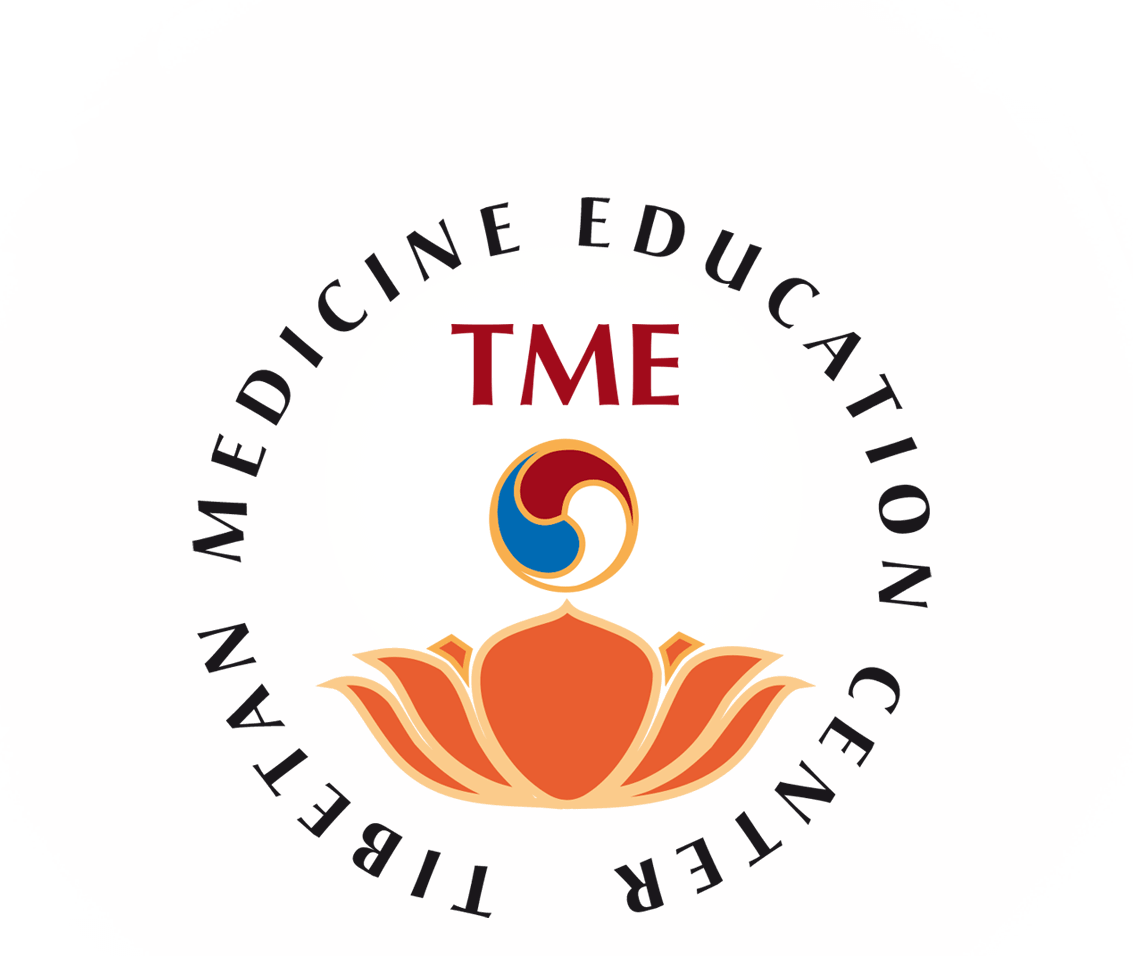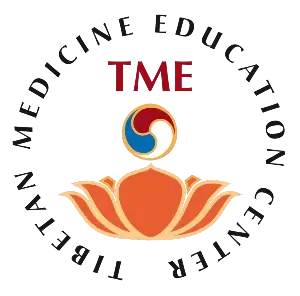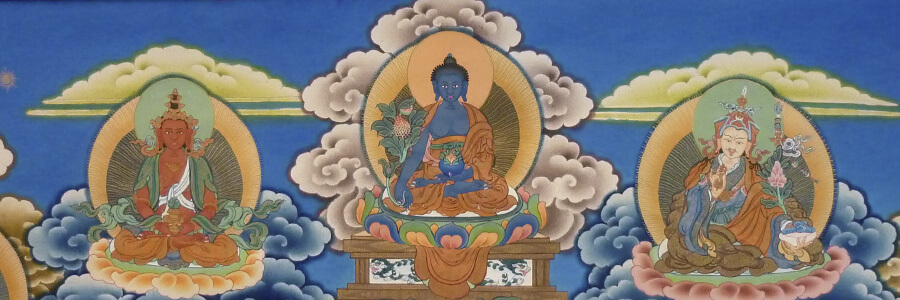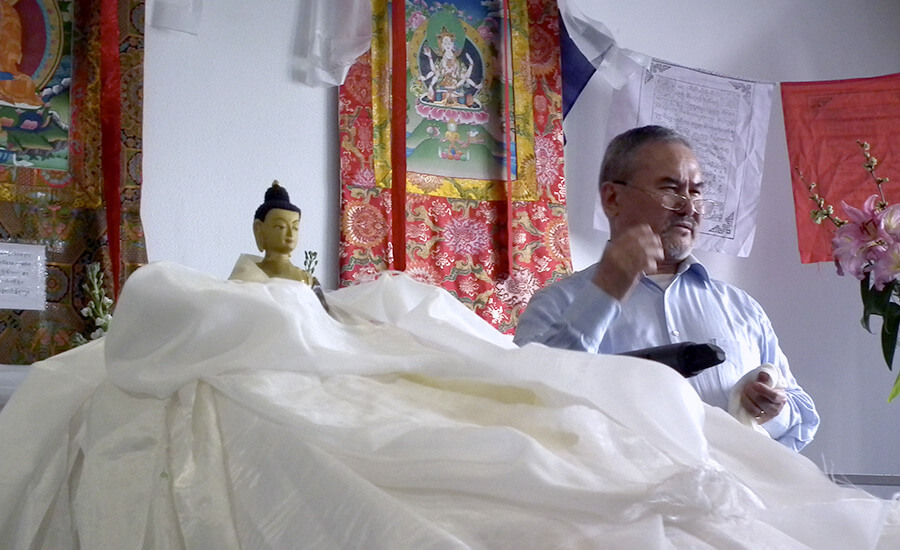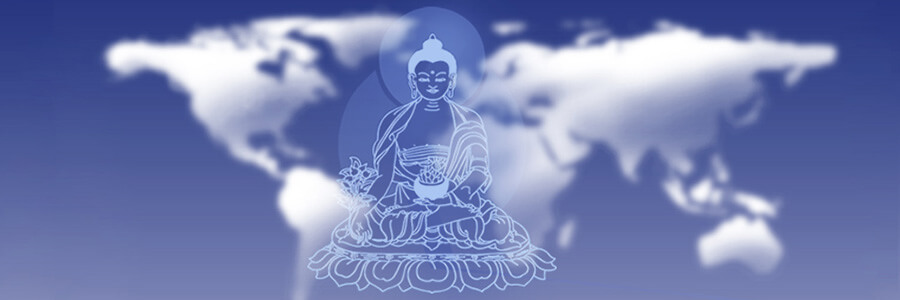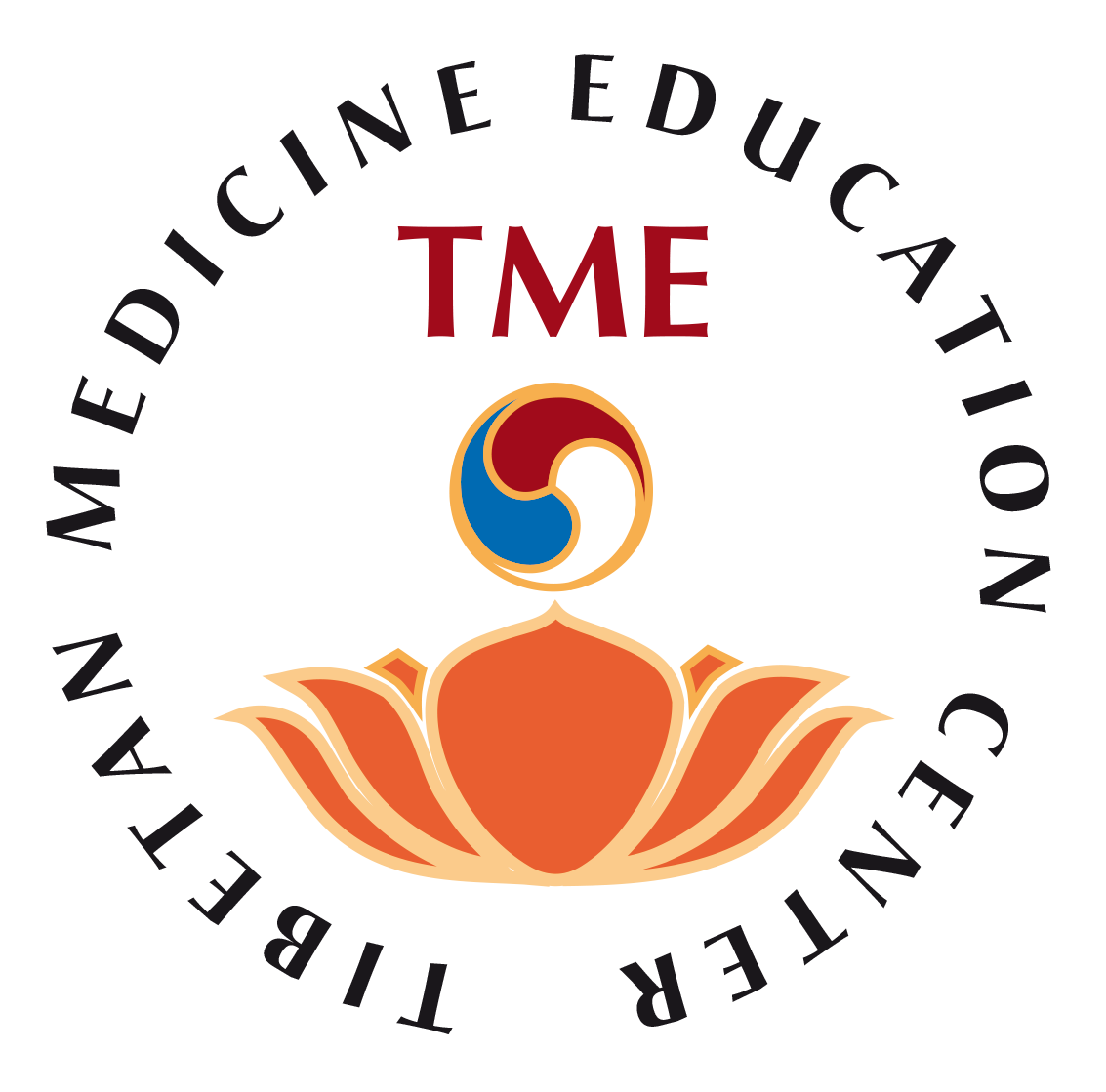Tibetan Medicine in the West
Tibetan Medicine medication

Padma inc., a Swiss company, is the sole European manufacturer of herbal medicinal products and food supplements based on Tibetan formulae. For more than forty years, it has produced them according to the western quality standards. It has thus seemed interesting to interview its director, Dr Herbert Schwabl, who kindly answered our questions.
…………………………………………………………………………………………………………..
Dr. Schwabl, can you shortly introduce yourself and Padma?
My name is Herbert Schwabl. I’m currently living in Zurich, Switzerland, and working at Padma company. I’m a trained physicist, and I started to work with Tibetan Medicine as a researcher twenty years ago, and now I’m still in the field of Tibetan Medicine formulas. And after all these years, I’m still interested in understanding how Tibetan Medicine works.
What kind of medication are produced by Padma?
Padma company produces only Tibetan herbal formulas. One characteristic of the Tibetan formulas is that they are multi-compound, and the formulas that we manufacture here are only based on herbal and mineral components. Our main product is the Tibetan formula PADMA 28 or PADMA BASIC, which is mainly used against atherosclerosis. In Switzerland, we also distribute Padma Lax as well as several other formulas. Formulas have different regulatory status in the different countries in Europe, so it is very difficult to say in few words which formula is available in which country.
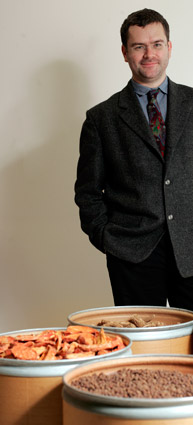 How does the way of producing them differ compared to the traditional manner?
How does the way of producing them differ compared to the traditional manner?
In Switzerland, there is a long tradition of herbal medicines. Natural medicine herbal formulas according to Western concept have developed in form of tablets and capsules that are then presented in packaging similar to that of western medicine. So we have also adopted this concept for the Tibetan Medicine, and try to present Tibetan products composed according to the traditional formula, but also according to the western laws of regulations, which exist for pharmaceutical companies. So it is a mixture in the way of production. From the Tibetan side, we try to preserve it as much as possible according to the composition, while from the modern Western side of course we also have to take in consideration the production standards and packaging.
To give you one example, in the traditional way, all the components are first brought together in a raw form, and then melded, then compounded into a medicine. This, according to western principles, is not possible. Here we first grind each ingredient separately into power, and then bring together the powdered substances to form the medication formula. So this is certainly a difference. But according to the active principle, we are convinced that both aspects, both methods of production are valid approaches.
Who are the customers? Do also western doctors prescribe Padma products?
In Switzerland, we have already been on the market for forty years. Then the name of Padma and our formulae are very well known, also by the medical doctors. So after all these years, also the Swiss doctors, the conventional doctors are now starting slowly to prescribe Tibetan formulae from Padma, which is the sign of trust of quality. Generally the doctors’ community is quite conservative, so in countries where we are not so prominent, have not so long on the market, it will still take some time. Therefore our main customers are of course from the public, and the public is, I think especially in complementary medicine, the driving force behind the movement of natural medicine.
What can Tibetan Medicine offer to the West?
This question needs a very long answer…!
I think Tibetan Medicine has brought back to us knowledge that we had already in Europe since a long time, but that we have maybe lost during the process of modernization. Of course, modernization has brought a lot of good things, but at the same time we’ve skipped other good things. Tibetan Medicine brings us back one of these lost memories of a time when people still had another contact with nature, another contact with the herbal material. So this knowledge of Tibetan Medicine, which is so finely tuned according to the energetic principles of Tibetan Medicine, offers a lot of benefits, especially in complex diseases, in diseases which have many causes, chronic diseases, and in prevention of diseases people will suffer from when they become older. Western Medicine is very effective whenever the cause of certain diseases is known, or when for instance we know that there is an inflammation, and then we need a steroid or cortisone. But when Western Medicine loses its power, the question is then what is on the other hand of the spectrum? And here I think Tibetan Medicine is a very good complement to Western Medicine. It is also a very gentle approach. It is not a hard approach with a lot of side effects. This gentle approach is therefore again very effective in conditions that need a long term of treatment. You can take Tibetan Medicine even for a long time without any side effects, which is also very important. So I think from the medicine point of view this only gives benefits.
From the conceptual point of view, we also see that Tibetan Medicine opens up the mind, that when we look at the disease, there are more possibilities of explaining it, and it is sometimes very good for the patient to get a different view on the disease. Also for the doctor who can practice Tibetan Medicine, he can see the disease from two angles, and sometimes, this is very helpful. So I think it is an enrichment of our western practice.
In your point of view, how is Tibetan Medicine perceived in the West?
The perception of Tibetan Medicine is definitely changing depending on who perceives it. For the customer, for the patient or for the alternative doctors, I think it is the easiest way to describe. Because for them it is another possibility for the treatment, it opens up the spectrum of treatment methods, so I think it is always good to have more options. If you have problems and you have two or three options, then Tibetan Medicine is another valid option for the patient.
In the field of science, for example, or in the university medicine, it is already more complex, because scientists and university doctors are very critical, and for them it is not just an option, it is a list of questions they put forward to Tibetan Medicine, and they want scientific answers. So this is quite complicated because Tibetan Medicine is a system by its own, and needs a proper understanding and a proper research methodology. Not all researchers are willing to take time and make such effort to do this, they just say, ”You just give me the medicine and I test it as I want” so it is quite complicated to find researchers that are really willing to think about those implications to do research.
And the last and most difficult problem is the field of the regulatory authorities, because there are a lot of laws, the national laws, the European laws, all these come together. Tibetan Medicine is a very complicated form of medicine, the authorities often say, “we can deal with simple forms of medicine”, that means natural medicine with one ore two herbs. But when it comes to the field of Tibetan Medicine formulae with five, ten or more ingredients, it is already too complex, sometimes they do not know the ingredients, which come for instance from Asia, so they put forward a lot of questions about these ingredients. So it is still the case that in many countries in Europe, it is very difficult to sell or even just to register Tibetan Medicine. This is a field we are very intensely working on, but I can tell you that even after years of working there is a very slow progress. And I would like to see more progress here but it needs maybe also a political pressure from the people.
What, in a general point of view, are the main obstacles for the development of Tibetan Medicine in the West? Do you encounter particular obstacles in your field of activities?
Obstacles can really be divided into two big parts.
One I already expressed before, it is the regulatory obstacles. Regulatory side means the terms of medicine, but also practicing Tibetan Medicine. It is very complicated because we need to answer certain legal requests to. It needs acceptance of the complex Tibetan herbal formulas. It needs acceptance of the Tibetan teachings. It needs also that regulatory books like pharmacopeia, textbooks, are written in a European language, so it needs translation work. So there is a lot of work to be done, not only from the authorities, but also from the Tibetan community side to really open up ways that we can really practice and produce Tibetan Medicine in Europe. Again these problems are more difficult in some countries, which are more complicated or more strictly regulated. Some countries are more liberal, but in general it is a very complicated task. That is from the legal side.
From the practical side, of course, there is also some obstacles, for the formulas for example to get clean, and good quality of the raw material, it is still one big problem. It will continue to be a problem, because the globalization has brought many benefits, but it also makes sometimes a supply of raw materials very difficult as a lot of raw material is used for other purposes than medicine. For instance we use Sandalwood in one formula. But then you hear that export is restricted, and you think that this might be a fair thing to do because we want to protect the trees, the sandalwood trees, so why not. But when at the same time you hear that there are some trees which are exported and used just for the carpeting or for making some instruments, or maybe some toys out of it because this is an industry in India or in other countries, then you think about the validity of such prescriptions… because if you cannot make medicine out of it but you can make chairs, it is somehow not very logic. But this is modern economy, and we are in a quite weak position. When you work in the field of Tibetan Medicine, from the inside you think Tibetan movement is big, but objectively speaking from a global position, the Tibetan movement maybe looks strong thanks to the position of His Holiness the Dalai Lama who is a famous world figure, but when it comes down to the practical, to the individual level, we are only a few people working for the cause. We can’t do a lot in this economic world, we are only a small part and so we have to find our niche. We are playing on a niche market here, so we have to compensate a lot of these obstacles with wit and hopefully intelligence to find our ways to survive there.
Do you think Tibetan Medicine has a future in the west in its traditional form? Do you think it is going to be mixed with other western cultures?
In terms of tradition, I think there will be both aspects. I think there will always be pockets of resistance one could even say, which is not a negative term. And the keeping of tradition as we have also in the Western culture, we have in certain parts of Europe. For example in the Alps they keep traditions, which in the cities are not kept anymore, and so I think the same can and will be true also for Tibetan Medicine. I think there will be parts or groups in Europe, which will keep a very strong traditional angle, but for larger implication at the European level and to get a stronghold with the people and on the professional level, we do need to have also a branch that is also modernizing and challenging the western part. And this challenge is of course a very demanding task because we have to translate the traditional knowledge and at the same time have to question ourselves, “are we doing this the right way?” because the way one does the modernization can also be a mistake. So this process is an ongoing process, this process of modernization, and it is also a very exciting process and I presume that we from Padma do this. But I think also the New Yuthok Institute is part of this movement to bring an interpretation of Tibetan Medicine into the West.
Tibetan Medicine is very much imbued with Buddhism, in your point of view, is this aspect important? Do you think Tibetan Medicine is going to keep this spiritual aspect here in the west?
Tibetan Medicine and Buddhism can be the same answer as with tradition. I think part of the Tibetan Medicine movement will keep a close connection with Buddhism, but I follow very much the saying of His Holiness the Dalai Lama who said at least in a lecture in Switzerland that one should regard Tibetan Medicine as an own discipline, that means separated from Buddhism. That doesn’t mean that you should avoid Buddhism, that you should avoid any religion, but at the same time medicine should stand on its own feet and should be regarded as a separate individual science and technique. And I think for Europe, which has gone through so many struggles of religion, and hopefully no future religion struggle is coming, it is also important that we keep this secular tradition.
Also from another point of view, when we say it is religious, it looks like religious medicine, then people from other religions would ask, “but what about me? I’m, let’s say Christian, or Hindu, or whatever, then I cannot take this Buddhist medicine.” I think then medicine should be neutral to serve everybody.
Generally speaking, what is the situation of Tibetan Medicine in the world and what could help Tibetan Medicine find its place amongst other medical systems here in the West?
I want to begin with the biggest threat, I think. The biggest threat for Tibetan Medicine is when it is loosing its name. This might not sound important, but you think of Tibet, the country of Tibet, at least in a near future, we do not know, will it come back, will it revive or not? In all authority bodies it is so complicated, the leaders of the states don’t even want to invite the Dalai Lama as their visitor! So how can we expect that they will say officially that they will support any Tibetan cause like Tibetan Medicine? So certainly the name “Tibet”, and “Tibetan Medicine” also is a name that needs a special attention because the identity of the medicine is somehow connected with the proper name. If we don’t have a name for a thing, then it is very likely that it will disappear. So this is at the moment I think the thing we have to work on, that Tibetan Medicine as a tradition, as a name, as a specific entity is not lost. So this is also maybe the task we have in the West, in Europe, in America, to keep Tibetan Medicine in the presence of everyday tasks. So I sometimes say when a farmer up in the Swiss mountains opens a box of Padma 28, and sometimes reads about our Tibetan formula, for him it is a reminder, maybe he doesn’t know what to make out of this and he just takes the medicine and doesn’t think much. But at least in his mind it is somewhere related to a specific culture. This is a very weak link but many of those weak links support a bigger thing. If we lose this, if there is no name connected with it, it will only become a field for some scholars in some remote institutes, which are interested in the history of ancient Asian medicines, and I hope it won’t ever be the case. But at the same time this is the biggest challenge we have at the moment.
Thank you
(Article published in 2012)
